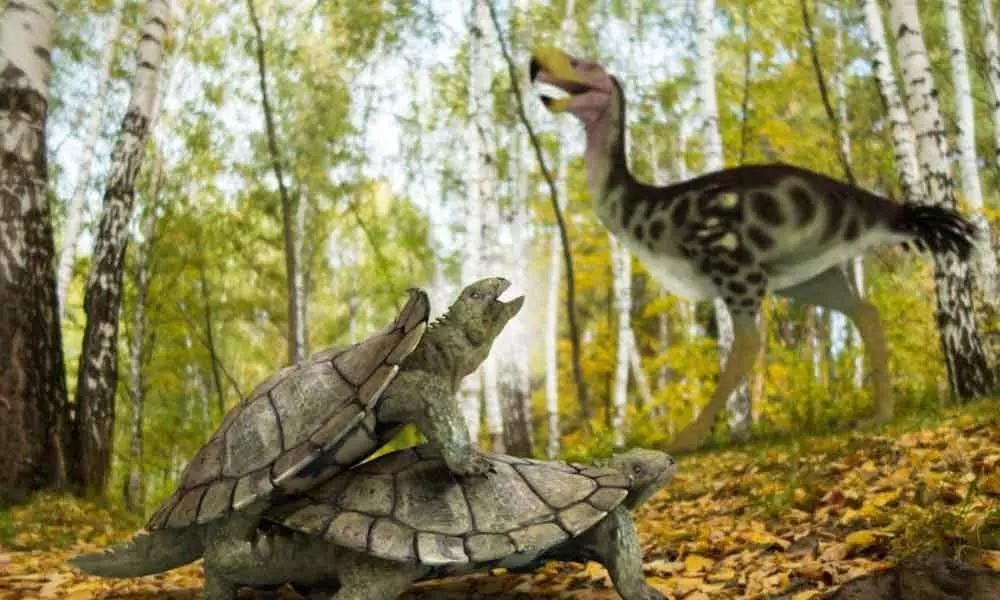Primitive turtle survived dinosaur-killing mass extinction: Study

A primitive species of turtles, measuring about 60 centimetres, was among the few terrestrial animals that managed to survive the mass extinction believed to have killed the dinosaurs about 66 million years ago, according to a study which analysed peculiar fossils found in France.
London: A primitive species of turtles, measuring about 60 centimetres, was among the few terrestrial animals that managed to survive the mass extinction believed to have killed the dinosaurs about 66 million years ago, according to a study which analysed peculiar fossils found in France.
The study, published in the journal Scientific Reports, said virtually all of the early groups of turtles habiting the northern hemisphere of the Earth disappeared after an asteroid impact wiped out nearly 70 per cent of life on the planet, except the newly discovered Laurasichersis relicta.
Only the so-called 'horned turtles', or meiolaniids, managed to survive, but this too was in Gondwana -- the current southern hemisphere -- according to fossils found in South America and Oceania, Adan Perez-Garcia from the National University of Distance Education (UNED) in Spain said in a statement.
The study noted that the newly discovered turtle L. relicta, corresponds to a new form, with very peculiar anatomical characteristics, and whose lineage evolved independently from that of the Gondwana tortoises, from which it separated 100 million years earlier. "The reason why Laurasichersis survived the great extinction, while none of the other primitive North American, European or Asian land turtles managed to do so, remains a mystery," Perez Garcia said.
When the asteroid linked to the dinosaur extinction plunged the Earth into a spiral of gas emissions, molten material, and caused a sudden warming of the climate and transformed the landscapes, the turtles lived, the study noted.
"The fauna of European turtles underwent a radical change: most of the forms that inhabited this continent before the extinction disappeared, and their role in many ecosystems was left vacant until the relatively rapid arrival of new groups from various places in North America, Africa and Asia," Perez Garcia said. However, the researchers said the turtles' origins stem from another continent.
"It is the last representative of a group previously identified in China and Mongolia, where it was known since the Jurassic, more than 100 million years before the new European Laurasichersis turtle existed.
This group arrived on this continent very shortly after the end of the Mesozoic, 66 million years ago," Perez Garcia said. According to the study, the shell of the newly discovered turtle was just over 60 centimetre long during adulthood and, like other primitive reptiles, it could not retract its neck into its shell to conceal its head from predators. However, it had other protective mechanisms such as an armour with large, mutually linked spikes, which were hard structures located on the neck, legs, and tail.
Perez Garcia said its peculiar shell, made up of numerous plates, is one of the turtle's most remarkable features, and one of the characteristics that make it unique. "Although the number of plates is usually the same in most turtles, the ventral shell region of the new species was provided with a greater number of these elements than those known in any other turtle," the palaeontologist said.

















